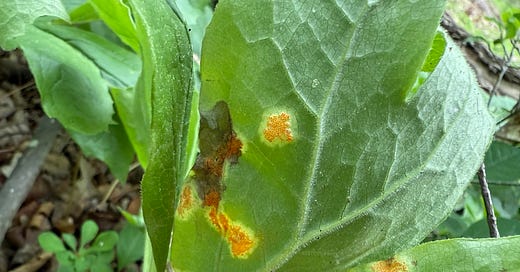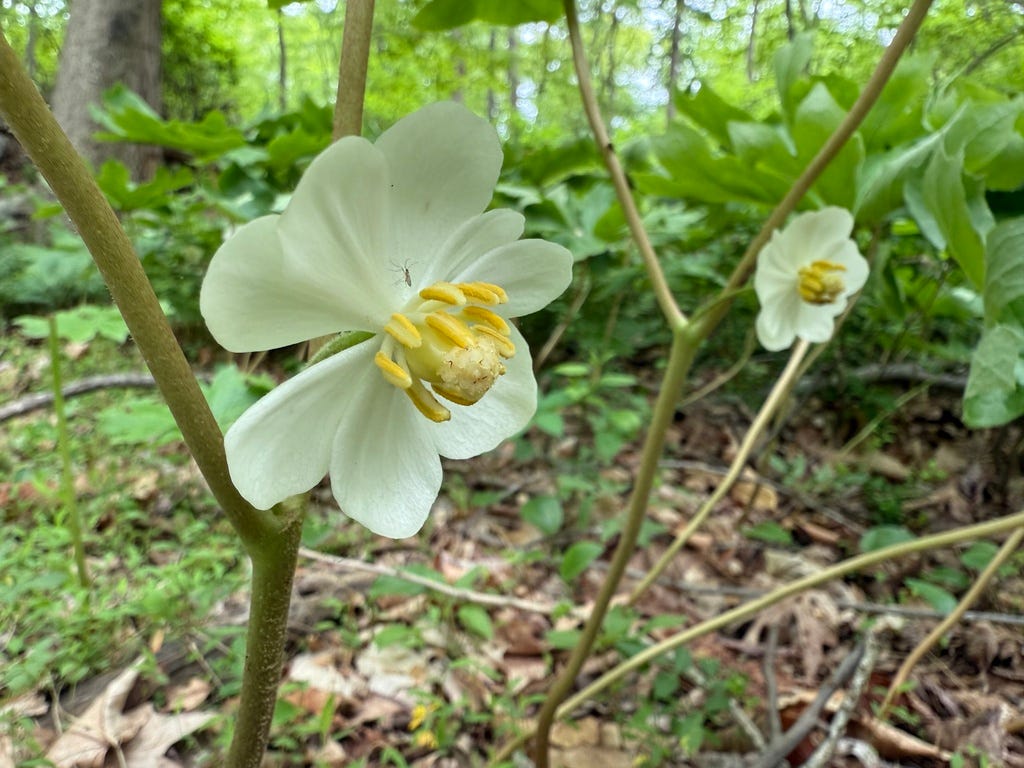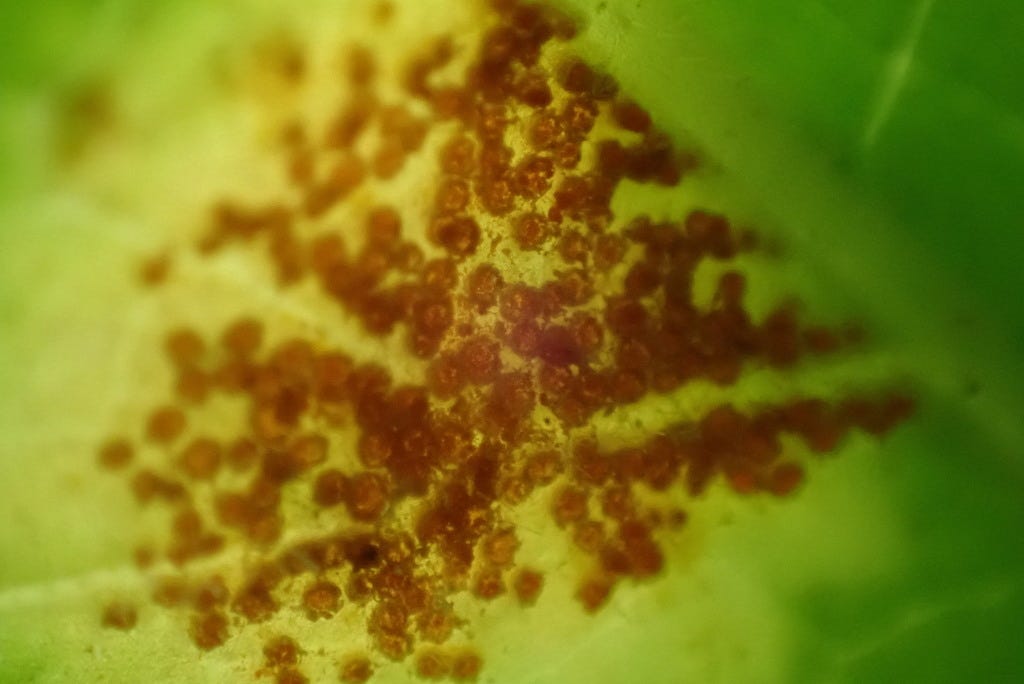Good evening, friends,
This week’s fungus is one I’ve wanted to write about for years. I first found these little orange pustules (which exclusively grow on a plant that looks tropical but is actually native to eastern North America) back when I was rambling around Central Park. With the focus on a singular fungus each week, and doing my best to keep it seasonal, this little orange rust never got its proper due until now. I found this rust just this past week in Stamford, CT.
The other rusts we’ve learned about throughout the history of Mushroom Monday are the serviceberry rust (Gymnosporangium), the juniper-apple rust (Gymnosporangium juniperi-virginianae), and the multiflora rose rust (Phragmidium rosae-multiflorae) if you need a little primer. That’s just if you’re rusty on your rusts. The long and short of it is they are a deeply fascinating and often overlooked order of fungi.
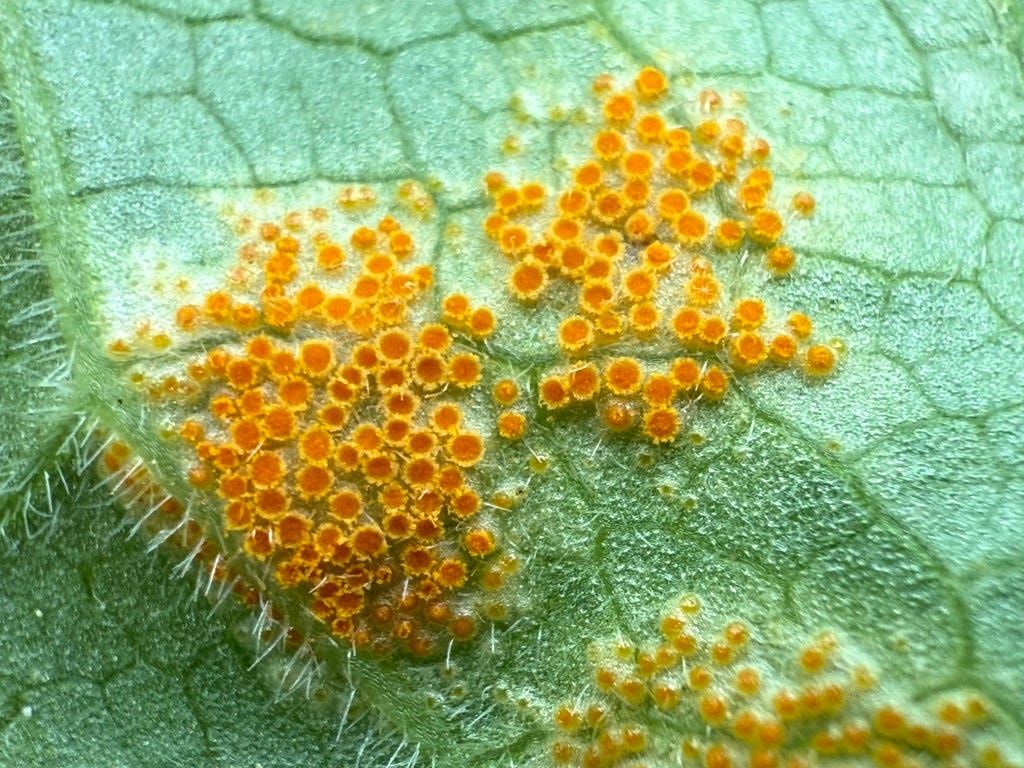
Don’t Trust the Rust?
Rusts, which typically present themselves as tiny orange dots on leaves, are not the first organism that comes to mind when many of us think of fungi. However, if you’re a farmer, they might be. Rusts are host specific pathogens that only infect living plants. In fact, many rusts need two different host species to complete their entire life cycle. In some rusts, that entails up to five physically different stages of life.
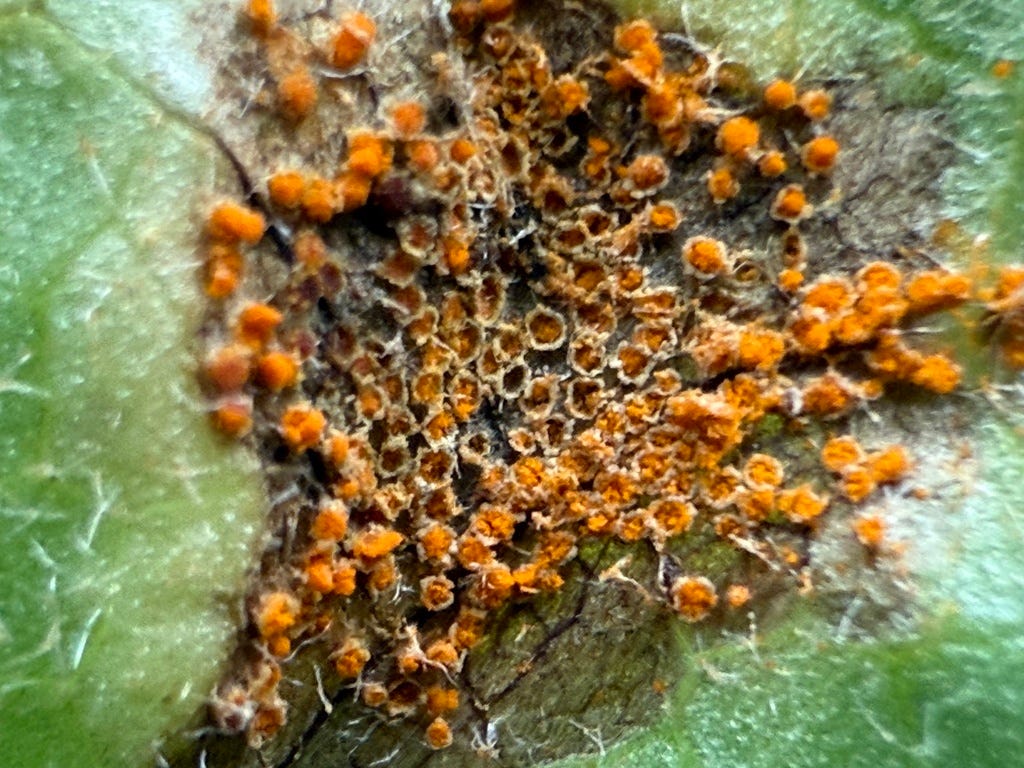
Rusts have been a concern for farmers dating all the way back to the Romans, and ostensibly back to when humans began the practice of agriculture. The Romans, specifically, would celebrate the holiday Robigalia which was named after Robigo, the god of rust and other plant diseases. This involved the sacrifice of a dog to coax divine intervention into keeping their crops free from rusts and other plant diseases.
Our mayapple rust, however, does not grow on a commercially valuable crop and subsequently there hasn’t been too much attention dedicated to the fungus. As far as rusts go, this one’s unique in that they only rely on one plant host, the mayapple (Podophyllum peltatum), to complete their entire life cycle. That makes them autoecious.
The Host
Mayapples, also known as mandrakes, are an herbaceous northeastern spring wildflower. Despite their name, they actually flower in May and then develop their apples in June. The plant is toxic, as is the apple when it’s not ripe, but when the fruit turns yellow it becomes a tasty treat for humans and other woodland critters.
Interestingly, it is thought that box turtles (Terrapene carolina) are the main consumer and seed distributor of the mayapple fruit. How nice is it that the turtles, despite their height limitations, are still able to enjoy picking apples? As a thank you, seeds that pass through the turtle’s digestive system have a higher germination rate than those that don’t.
Most of the time when you find mayapples you will find a large stand of them. It’s likely that this is just one organism spreading through the root-like rhizomes. Interestingly, the flower of the mayapple doesn’t produce nectar (so it doesn’t really attract insects), and the plant can’t self-pollinate. Perhaps that’s why these mandrakes spread so aggressively through their rhizomes. They need an insect to mistakenly attempt to get nectar from two different mayapple groves in order for fruit to form — I guess at that point you just take matters into your own hands and grow sideways yourself.
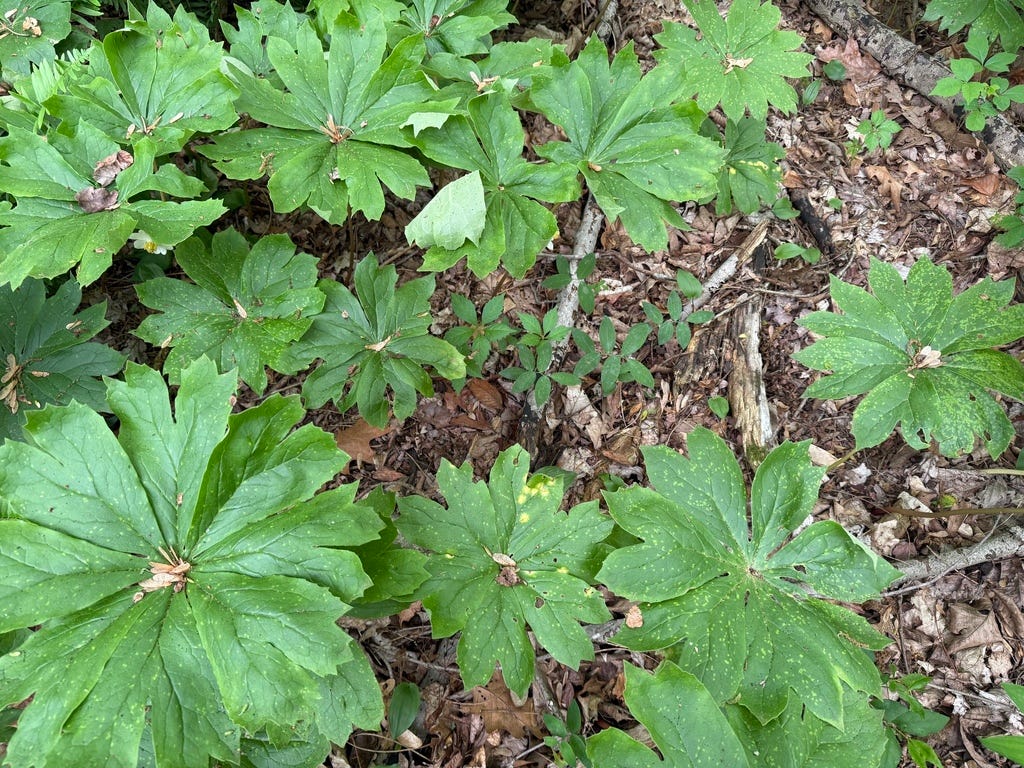
Taxonomy and Etymology
Mayapple rust used to be known as Puccinia podophylli as all rusts were once grouped into the two genera Puccinia or Uromyces. In 1906, the fungus was renamed Allodus podophylli but the name did not stick until a 2012 study out of Maryland used DNA sequencing to formally uphold the taxonomic distinction.
The etymology was a little unclear but it seems like Allodus comes from the Greek allos which means “different”, and the suffix -odus is derived from the Greek hodos which translates to “path” or “way”. The “different path” moniker may refer to the unique life stages of Allodus relative to other rust fungi.
The species name Podophylli refers to the mayapple (Podophyllum peltatum), and can be broken down to the Greek podos and phyllon which mean “foot” and “leaf” respectively.
Set and Setting
The geographic range of A. podophylli is that of the mayapple: east of the Rockies from the Great Plains down to the Gulf Coast, up through the Great Lakes, and on into Southern Ontario and New England. The rust can be found spring into summer — basically anytime before the plant goes dormant in the midsummer and all the leaves die back naturally.
The different ways fungi can live never cease to surprise, huh? It’s raining as I write which means we have more spring mushrooms on the way,
Aubrey
References:
Minnis AM, McTaggart AR, Rossman AY, Aime MC. Taxonomy of mayapple rust: the genus Allodus resurrected. Mycologia. 2012 Jul-Aug;104(4):942-50. doi: 10.3852/11-350. Epub 2012 Apr 11. PMID: 22495446.
Bunyard, 2013. https://www.fungimag.com/spring-2013-articles/LRV6I1Mayapple.pdf
https://penelope.uchicago.edu/encyclopaedia_romana/calendar/robigalia.html
https://extension.colostate.edu/topic-areas/agriculture/rust-of-dry-beans-2-936/


